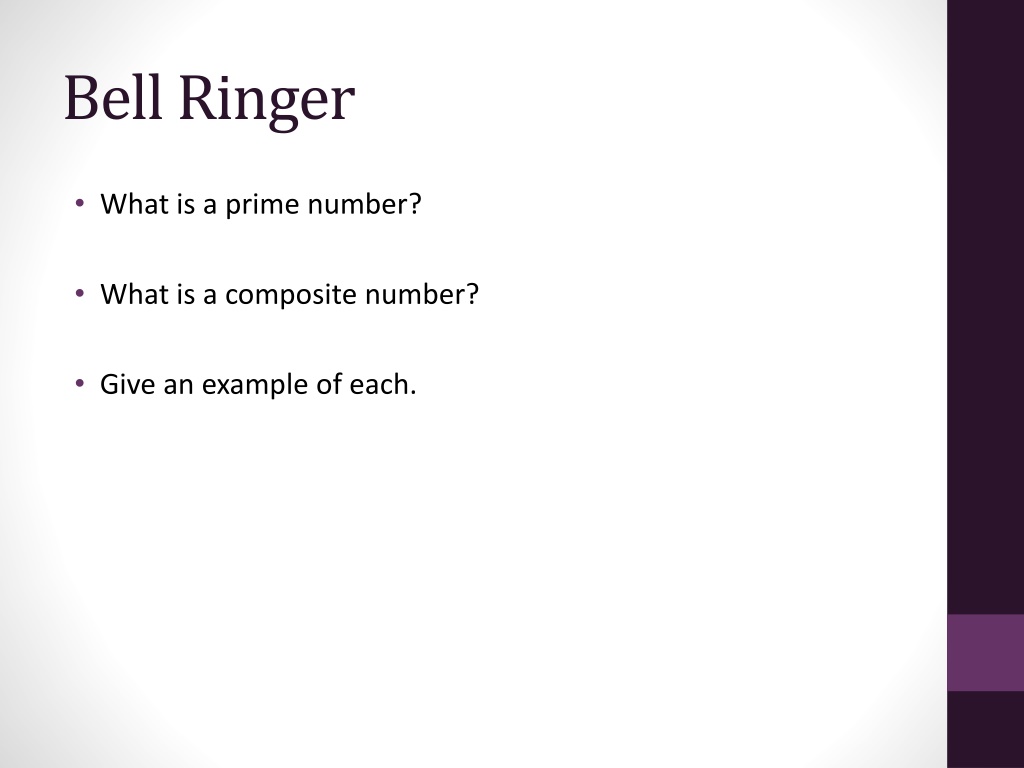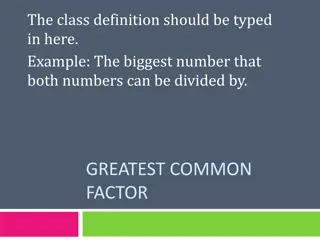Understanding Prime and Composite Numbers with GCF
Explore the concepts of prime and composite numbers, the difference between them, and how to find the Greatest Common Factor (GCF). Prime numbers have only two factors, 1 and the number itself, like 2, 3, 5. Composite numbers have more than two factors, such as 4, 6, 8. Learn to identify prime and composite numbers, prime factorization, and calculate the GCF through prime numbers. Illustrative examples simplify the understanding process.
Download Presentation

Please find below an Image/Link to download the presentation.
The content on the website is provided AS IS for your information and personal use only. It may not be sold, licensed, or shared on other websites without obtaining consent from the author. Download presentation by click this link. If you encounter any issues during the download, it is possible that the publisher has removed the file from their server.
E N D
Presentation Transcript
Bell Ringer What is a prime number? What is a composite number? Give an example of each.
Greatest Common Factor Mr. Haupt CC.2.1.8.E.1
Greatest Common Factor The Greatest Common Factor, or GCF, is the largest number that goes in to every number given. For example, the GCF of 12 and 16 is 4. To find the GCF, you need to know the difference between prime and composite numbers.
Prime Numbers Prime numbers are numbers where the only factors, or ways to multiply, are one and the given number. For example, the number 17 can only be broken down into one times 17. Other examples: 1, 2, 3, 5, 7, 11, 13, 19, 23, 31, etc
Composite Numbers Composite numbers are basically numbers that are not prime. So, they are numbers that have more multiples than just one and itself. For example, the factors of 28 are: 1 x 28 2 x 14 4 x 7
Prime or Composite? 89 21 33 97
Prime Factorization Prime Factorization is breaking a number down into its smallest (prime number) factors. I find it easiest to use a factor tree. 30 54
What if we add letters? Nothing changes, except now we have to write out the letters. 45a2b3 36c3d
GCF, finally! So finally, we can get to the actual GCF. To find the GCF, we have to do the prime factorization of each number given. Then we take all the prime numbers they have in common, and multiply them. Our answer is the GCF.
For example Find the GCF: 36 and 45 28a2b and 35ab2
A few more 88 and 44 64a2b2and 96a2b










